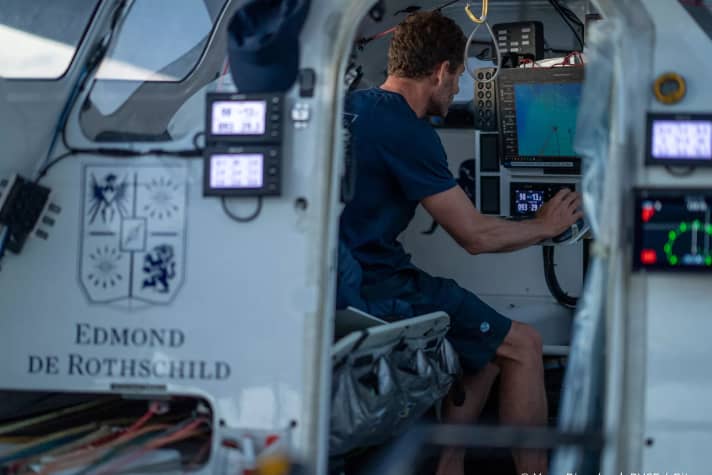12th Route du Rhum: A childhood dream comes true for top favourite Caudrelier
Tatjana Pokorny
· 04.11.2022
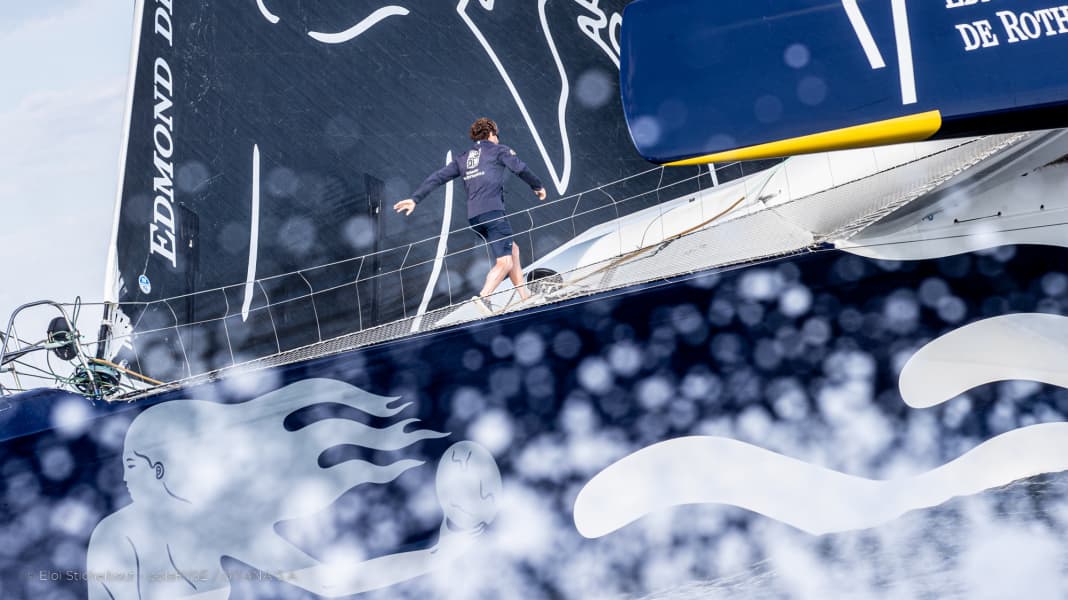
After a final break with his family, Charles Caudrelier has already retired to his "rowing cell". Together with his advisors, the 48-year-old two-time Ocean Race winner (2011/2012 with "Groupama", 2017/2018 as skipper of the Dongfeng Race Team) is preparing for his debut in the transatlantic classic Route du Rhum. With "Maxi Edmond de Rothschild", Caudrelier is considered the favourite in the Ultim class of flying trimarans, although it will be his debut in the Transat Classic.
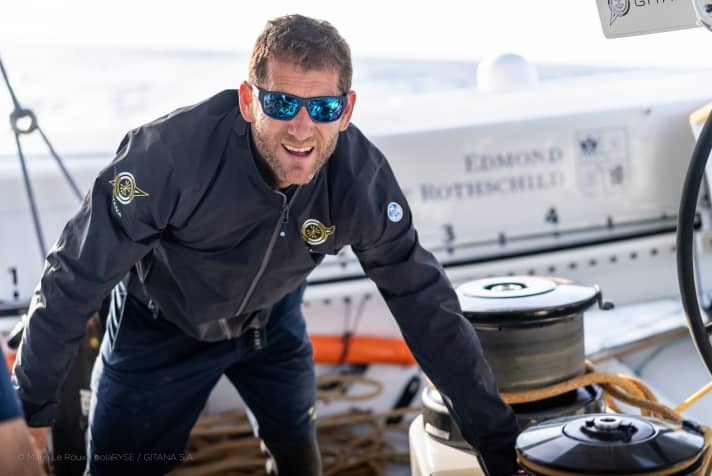
Charles, where do you place the upcoming adventure of the Route du Rhum when you compare it with the many highlights of your career, which certainly include the victories in the Volvo Ocean Race, but also many other successes?
The Route du Rhum is a childhood dream come true for me. It really is the race that steered my life and then my career towards ocean racing. By watching the great heroes of this race, my passion has grown and solidified.
Part of this passion is the Ultim trimaran "Maxi Edmond de Rothschild", with which you are now embarking on your first Route du Rhum?
Multihulls have always been very present in my mind. I was able to sail a little with Pascal Bidégorry on 'Banque Populaire' or also with 'Gitana' in 2013. However, the opportunities initially led me more towards monohulls. I first travelled on small boats and won the Solitaire du Figaro in 2004. Then there were the Imocas and of course the Volvo Ocean Race and my two victories in this big team race around the world. The Ocean Race is more than a race and I was empty, tired and less keen to sail at the end, I think.
At this time, the Gitana team was recruiting new skippers. The chance to start again with a multihull, and then also with Gitana's 'Maxi Edmond de Rothschild', the first flying Maxi of its generation, such an innovative and pioneering boat, was a huge new motivation. All the more so as this new story was to be written by two people and with Franck Cammas. Franck and I have known each other for ages, we have sailed and won many races together. He specialises in multihulls and flying. It was a great opportunity and an accelerator for my learning on board.
"I only had multihulls and the Route du Rhum in mind"
You're going into Sunday's race as a rookie and a favourite. That's an unusual mix. How do these two normally rather contrasting positions determine your approach to the Route du Rhum?
I've been dreaming of multihull sailing since I started racing. Some of my younger mates grew up dreaming of the Vendée Globe, but I only had multihulls and the Route du Rhum in my head. I'm actually competing in Saint-Malo as a rookie, because the Rhum will be my first big single-handed race at the helm of a multihull.
At the same time, I have gained a lot of experience on the 'Maxi Edmond de Rothschild'. Over the last three years, we've had time to do everything right with Franck Cammas. And we have won almost everything with this boat. The many miles I've clocked up over these three years and the time I've invested in developing and fine-tuning it have enabled me to know my boat perfectly. I know that I will arrive at the Route du Rhum with all the cards in my hand and that it is now up to me to play my hand.
"Solo racing is my great love"
Solo or team racing - we assume you like both. What is it that you particularly like about solo racing and what perhaps less so?
I haven't competed in solo races for a very long time, but they are my great love. I started single-handed sailing and that was really what drew me to racing and competition. My career opportunities have led me more towards crew, where I love the opportunity to push boats to the top of their performance potential. But I really have a soft spot for single-handed sailing.
The format and the demands of the exercise of sailing single-handed really stimulate me. Single-handed sailing, especially on our large flying trimarans, is not only a physical challenge, but also a great mental challenge. You have to be 100 per cent committed to the task at hand with such enormous intensity. Solo sailing remains an adventure and I think that's what I particularly like about it.
"The Route du Rhum is the queen of transatlantic regattas! For us as French sailors, it is our heritage."
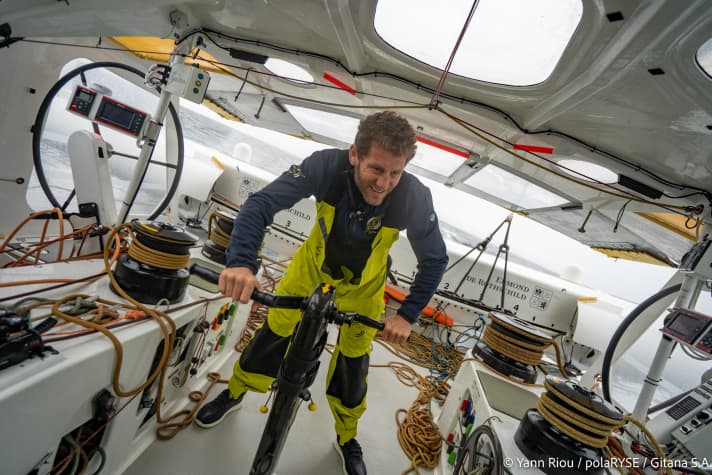
How would you describe the Route du Rhum and its magic in a nutshell?
The Route du Rhum is quite simply the queen of transatlantic regattas! As a French sailor, it is our heritage. All the great sailors have competed in this now legendary race. It has all the ingredients of a great race: a challenging and varied course, plus a start harbour and a finish island that have always been there and are an essential part of the atmosphere that the race exudes. This can be seen again this year in the numerous spectators on the quays of Saint-Malo, which have a magical effect on the Route du Rhum.
Which sailors have inspired you in your career?
The first is certainly Laurent Bourgnon, a legend of the Route du Rhum. I still remember the pictures of him in 1994'Fréhel' overtook me. I wanted to become that man. I was lucky enough to meet very great sailors in my career who inspired me a lot along the way. In the early days, there was a man like Marc Guillemot, with whom I sailed my first regattas in the Figaro, then Michel Desjoyeaux, who also sailed in Port-la-Forêt, and of course Franck Cammas. Our lives and careers have been very closely linked for over 20 years. We have travelled the world together and have a deep mutual respect for each other.
A typical fan question before the Route du Rhum is this: How can a man or a woman successfully and safely operate a machine like your giant on their own?
A boat like the 'Maxi Edmond de Rothschild' is a powerful and physically demanding boat, but the greatest strength you need to have to drive such a machine is certainly the ability to think ahead and be thorough.
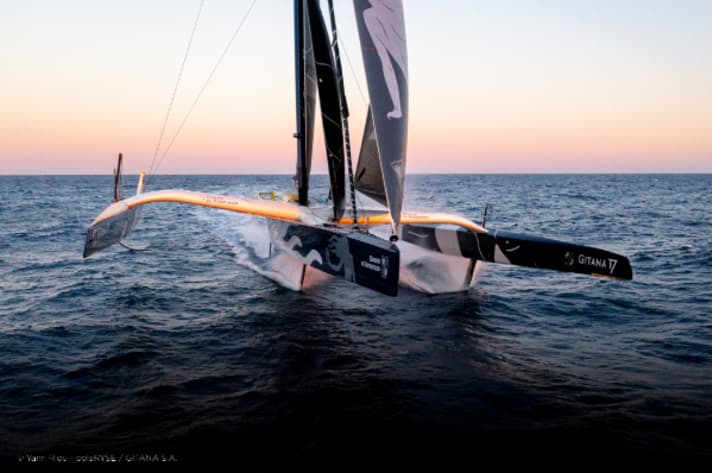
Can you briefly describe the "Maxi Edmond de Rothschild"?
After a few sailing trips on board, I fell in love with this boat. For me, it is extraordinary! The flight and the feelings it conveys are incredible. The 'Maxi Edmond de Rothschild' is revolutionary, powerful, high-performance and very lively.
What are the three most remarkable features of this boat, which represents the present and future of high-speed ocean racing?
The Maxi Edmond de Rothschild is the result of bold work between a designer, Guillaume Verdier, who for me is a visionary of yacht design, and a team driven by its owners - Ariane and Benjamin de Rothschild - who have gone to the end of their convictions. It may seem simple today, but when the Gitana team launched the 'Maxi Edmond de Rothschild' project, many observers were very sceptical. I was not yet part of the team at the time of the launch in 2017. It is true that the design decisions were very innovative and raised many questions. Today, the 'Maxi Edmond de Rothschild' is the reference.
"The biggest fear is UFOs and collisions"
How big is the worry that an experienced and successful skipper like you with a fantastic boat like yours could fail due to a technical problem, a collision with a UFO or other misfortune? And how do you deal with this worry?
Ocean racing is a technical sport and breakage is part of the game! We do everything we can to prepare our boats well and avoid it. I also do everything on board to protect my boat and sail with good seamanship. But my biggest fear is of course ufos (ed.: abbreviation for"Unknown floating objects")and collisions. We are trying to improve in this area, for example with infrared camera systems at the top of the mast or with pingers in the centreboard, but none of this is yet reliable, so the risk remains.
How much sleep will you get on average per 24 hours during the Route du Rhum?
On board our boats, we always adapt to the weather. Our sleeping time depends mainly on the weather conditions we encounter. I try to accumulate at least four hours of sleep per 24 hours in 15- to 20-minute stretches. In my opinion, sleep management is one of the keys to success. I have worked intensively on this in preparation.
What sailing time do you have in mind - also in view of the fact that Francis Joyon's record time with "Idec Sport" is 7 days, 14 hours, 21 minutes and 47 seconds?
We are aiming for between 7 and 9 days, depending on the weather. At the moment, the weather conditions don't seem favourable for beating Francis Joyon's time. But that could still change.
Is the boat mainly steered by the autopilot? How often do you still steer yourself, what are the main tasks during the race?
In the race, the autopilot actually steers 90% of the time. But there's a lot to do on board: I have to adjust the sails, foils and much more, communicate with my routers about the weather and strategy. I have to rest as soon as the conditions allow, feed myself and communicate with the world so that as many people as possible can experience my race.
